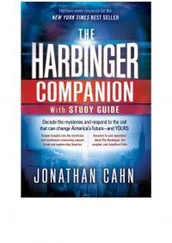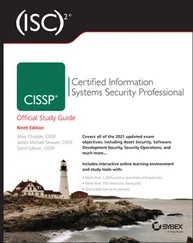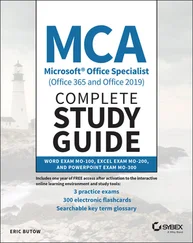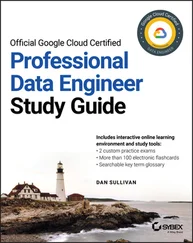The object's storage class
The number of versions of an object as well as the number of days since the object became noncurrent
Whether or not the object is “live” (an object in nonversions bucketed is “live”; archived objects are not live)
Storage class
You can monitor data lifecycle management either by using Cloud Storage usage logs or by enabling Pub/Sub notifications for Cloud Storage buckets. The latter will send a message to a Pub/Sub topic when an action occurs.
Systems Integration and Data Management
Business requirements can give information that is useful for identifying dependencies between systems and how data will flow through those systems.
Systems Integration Business Requirements
One of an architect's responsibilities is to ensure that systems work together. Business requirements will not specify technical details about how applications should function together, but they will state what needs to happen to data or what functions need to be available to users.
Let's review examples of systems integration considerations in the case studies. These are representative examples of system integration considerations; it is not an exhaustive list.
EHR Healthcare Systems Integration
The EHR Healthcare Systems case study notes that there are several legacy file and API-based integrations with insurance providers that will be replaced over the next several years. The existing systems will not be migrated to the cloud. This is an example of a rip-and-replace migration strategy.
Even though the existing systems will not be migrated, new cloud-native systems will be developed. As an architect working on that project, you would consider several challenges, including the following:
Understanding the volume and types of data exchanged
Deciding how to authenticate service requests
Encrypting data at rest and in transit
Managing encryption keys
Decoupling services to accommodate spikes in service demand
Designing ingestion and data pipelines
Monitoring and logging for service performance as well as security
Using multiregion storage and compute resources for high availability while operating within any regulations that put constraints on where data may be stored and processed
In addition to these technical design issues, the architect and business sponsors will need to determine how to retire existing on-premises systems while bringing the new systems online without disrupting services.
The Helicopter Racing League is highly focused on improving predictive analytics and integrating their findings with the viewer platform. Consider two types of analytics described in the case study: (1) viewer consumption patterns and engagement and (2) race predictions.
To understand viewer consumption patterns and engagement, the company will need to collect details about viewer behaviors during races. This will likely require ingestion systems that can scale to large volumes of data distributed over a wide geographic area. The ingestion system will likely feed a streaming analysis data pipeline (Cloud Dataflow would be a good option for this service), and the results of the initial analysis as well as telemetry data may be stored for further analysis.
In fact, the data may be stored in two different systems for further analysis. BigQuery is optimized for scanning large volumes of data and would make it a good choice for analyzing data that spans a race or multiple races and entails hundreds of terabytes of data. Bigtable provides low-latency writes and is highly performant for key-based lookups and small scans, such as time-series data for a single viewer over the past 10 minutes.
Mountkirk Games Systems Integration
Let's consider how datastores and microservices architectures can influence systems integration.
Online games, like those produced by Mountkirk Games, use more than one type of datastore. Player data, such as the player's in-game possessions and characteristics, could be stored in a document database like Cloud Datastore, while the time-series data could be stored in Bigtable, and billing information may be kept in a transaction processing relational database. Architects should consider how data will be kept complete and consistent across datastores. For example, if a player purchases a game item, then the application needs to ensure that the item is added to the player's possession record in the player database and that the charge is authorized by the payment system. If the payment is not authorized, the possession should not be available to the player.
Mountkirk Games uses a microservices architecture. Microservices are single services that implement one single function of an application, such as storing player data or recording player actions. An aggregation of microservices implements an application. Microservices make their functions accessible through application programming interfaces (APIs). Depending on security requirements, services may require that calls to their API functions are authenticated. High-risk services, such as a payment service, may require more security controls than other services. Cloud Endpoints may help to manage APIs and help secure and monitor calls to microservices.
TerramEarth Systems Integration
From the description of the current system, we can see that on-board applications communicate with a centralized data collection system. Some of the data is collected in batches when vehicles return to base, and some is collected as it is generated.
As part of planning for envisioning future needs, an architect working with TerramEarth should consider how to support vehicles sending more data directly, eventually retiring the batch data load process in favor of having real-time or near-real-time data uploads for all vehicles. This would require planning an ingest pipeline that could receive data reliably and perform any preprocessing necessary.
Services that store and analyze the data will need to scale to support millions of vehicles transmitting data. To accomplish this, consider using a Cloud Pub/Sub queue, which allows decoupling and buffering so that data is not lost if the ingestion services cannot keep up with the rate that new data is received.
TerramEarth will likely want to share the growing inventory of data with dealers. This will require integrating TerramEarth and dealer systems. The architect should gather additional details to understand how best to share data with dealers. For example, an architect may ask, “What features of the data are significant to dealers?” Also, architects should consider how dealers would access the data. Dealer applications could query TerramEarth APIs for data, or TerramEarth could send data directly to dealer data warehouses or other reporting platforms.
Each case study has examples of systems integration requirements. When considering these requirements, keep in mind the structure and volume of data exchanged, the frequency of data exchange, the need for authentication, the reliability of each system, how to prevent data loss in the event of a problem with one of the services, and how to protect services from intentional or unintentional bursts in API requests that could overwhelm the receiving services.
Читать дальше












